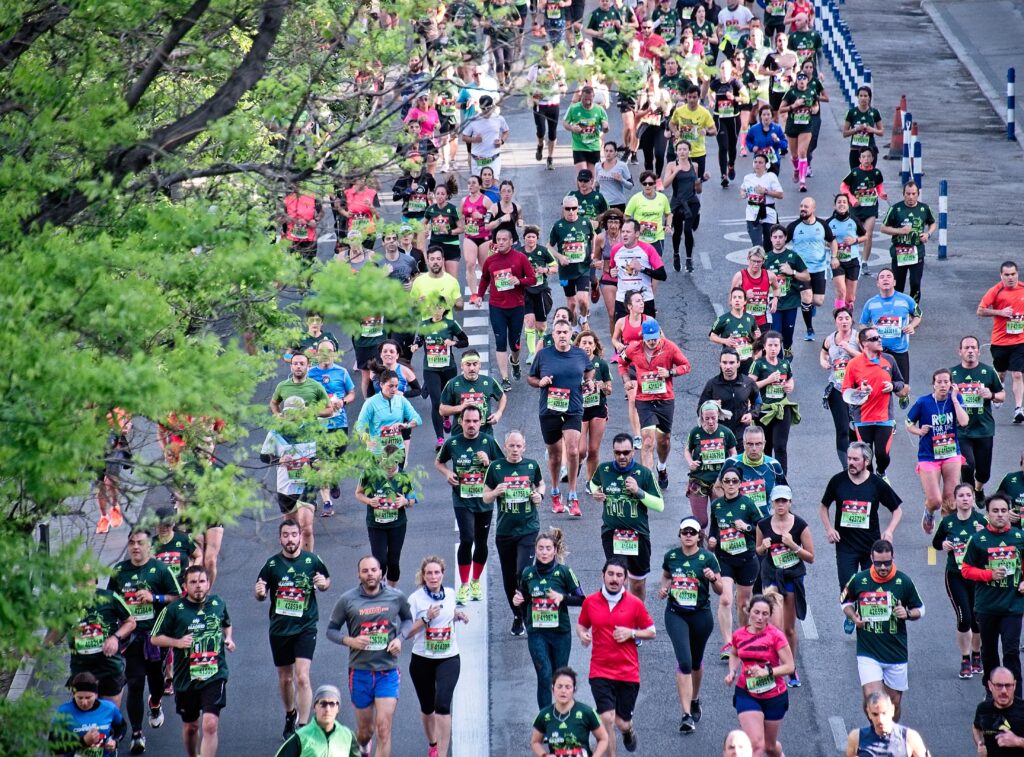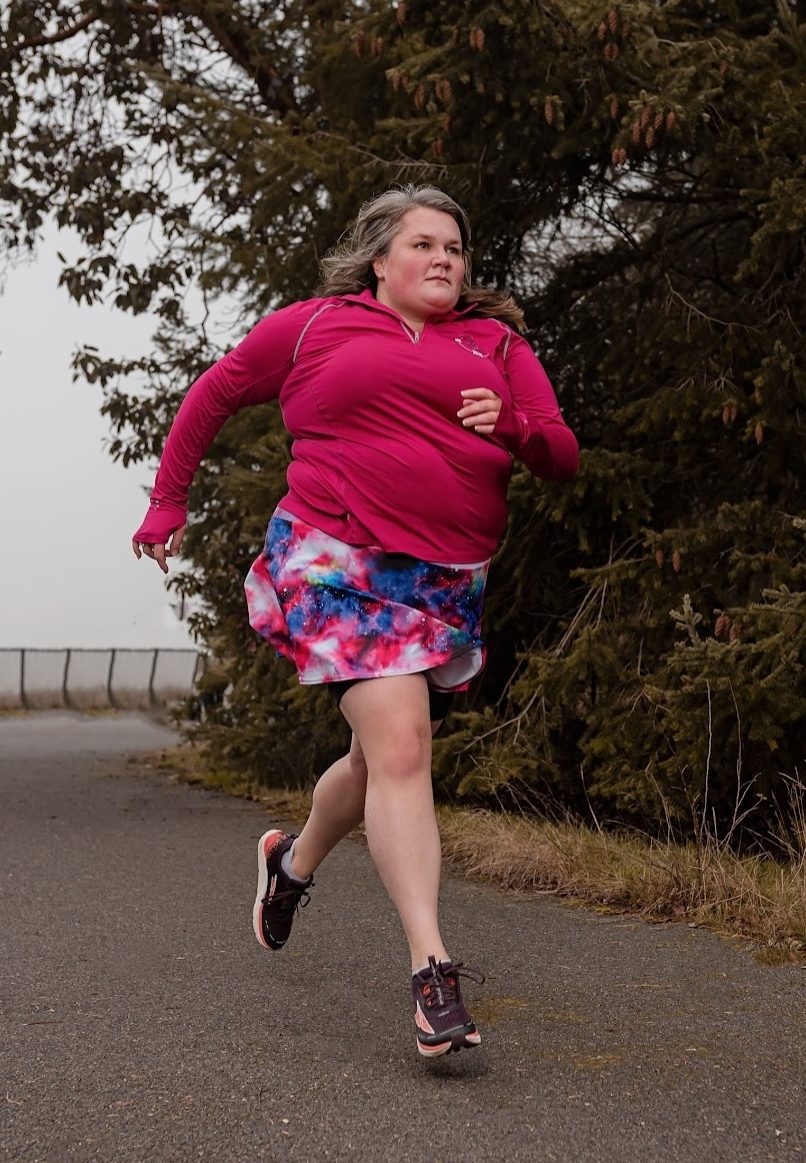Crush Your Running Goals: A Guide to Proper Form and Technique

Okay, slower runners, and runners in larger bodies – you’ve been with me for the basics of getting started. You know to start slow, switch to a growth mindset, and find yourself a community like The Movement Mindset. You’ve learned that getting fitted for shoes is essential. We discussed how to lean forward until you feel like you’re falling, then fall into a running stride. And you know to do a head-to-toe scan while running to make sure that everything feels right with your mechanics. So now that you’ve gotten started, how do we drill down into the actual movement practice to help you crush your running goals? Glad you asked.
Tips To Help You Crush Your Running Goals
Dynamic warmup
Start out every workout – and I mean EVERY workout – with some sort of warmup. It doesn’t have to be extensive, 5-10 minutes is all you need. A simple walk will do. I also offer some examples over on my TikTok page, like this one here (content warning: audio is NSFW, but the moves are safe for anywhere). The key here is the word “dynamic.” Don’t just grab your ankle and pull while standing still, to stretch your quad – save that one for after the run. When your muscles aren’t warmed up, a static stretch like this one can lead to muscle tears and injury. However, leg swings and high knees help to increase blood flow to the muscles that need it, and can get you started safely.
Bewbs and Toes
While running, look down at your chest/your bewbs – you don’t need bewbs, just a chest, but bewbs is fun to say. Watch your toes as you run. You only want to see one to two inches of your toes while running. If you can see your shoelaces, it’s possible that you are overstriding, which is a key cause of injury. If you find you are seeing your shoelaces, focus more on the next tip:
Squeeze your glutes and think about the kickback
Engaging your glutes and hamstrings helps to power your run and ensure you’re running with correct form. If you imagine you’re kicking backward with each stride, you tend to land more midfoot under your body, which is key to avoiding injury.
Saw, Don’t Chop
Hold your arms at 90-degree angles while you run. Hands should be gently clasped as if you’re holding potato chips that you want to eat at the end of your run – crushing them means no snack, and who wants that? Make sure you aren’t crossing the midline of your body with your hands, and you’re moving your arms in a smooth sawing motion, not chopping.
Head Up, Look Ahead 15-20 feet
This one’s fairly self-explanatory – know what’s coming and keep your head aligned with your body.
Shoulders Down And Back
Relax! I know I carry all my stress in my shoulders, so I often have to remind myself to drop ‘em and relax.
Breathe In An Even/Odd Pattern Of Steps
This one can be tough to get down, and will take a bit of practice, especially if rhythmic breathing is a struggle for you. First of all, slow down, and then slow down even more until you can get your breathing into a pattern. Once you’ve developed a pattern based on breathing in on certain steps and out on certain steps, begin working on an even/odd pattern. This will allow you to land on a different foot with each breath, which helps to balance the impact on your feet.
Belly Breathe
I’m going to preface this with the fact that many of us in larger bodies experience belly trauma; the idea that we must hide and minimize our bellies as much as possible due to societal and family expectations. This can make belly breathing difficult. It took me a long time to be able to release the muscles of my belly to fully allow for belly breathing on my runs. Despite the time it took, I have found that it makes a huge difference. Take your time and be gentle with yourself on this one. Breathe in while pushing out your stomach, and breathe out while squeezing in your abdominals. Practice this in a safe place as long as you need to before trying it on a run.
Static Cooldown
This is where grabbing your ankle and pulling your quad is acceptable. As is stretching the ankles, hamstrings, hip flexors, and more. This will help make your muscles stronger and more resilient for your next run.
Don’t try all of this at once! Learning how to run properly takes practice and time. Pick one or two of these concepts. Try them on your next run, or make a plan to try one for a week. Once you’ve mastered that one, add in another.
And be gentle with yourself. Running is hard – if it wasn’t, everyone would do it. And feel free to reach out to your fat running coach at coach.thefatathlete@gmail.com if you have any questions about any of these tips, or how to get started. Before you know it you will crush your running goals.
ADVERTISEMENT

Marci Braithwaite is an RRCA- and USATF-certified running coach who focuses on beginner runners and athletes in larger bodies using Size-Inclusive and HAES-aligned principles. She has completed over 100 races of various distances in her 12 years of running, including a marathon, and she has her sights set on completing a 50k in 2023









